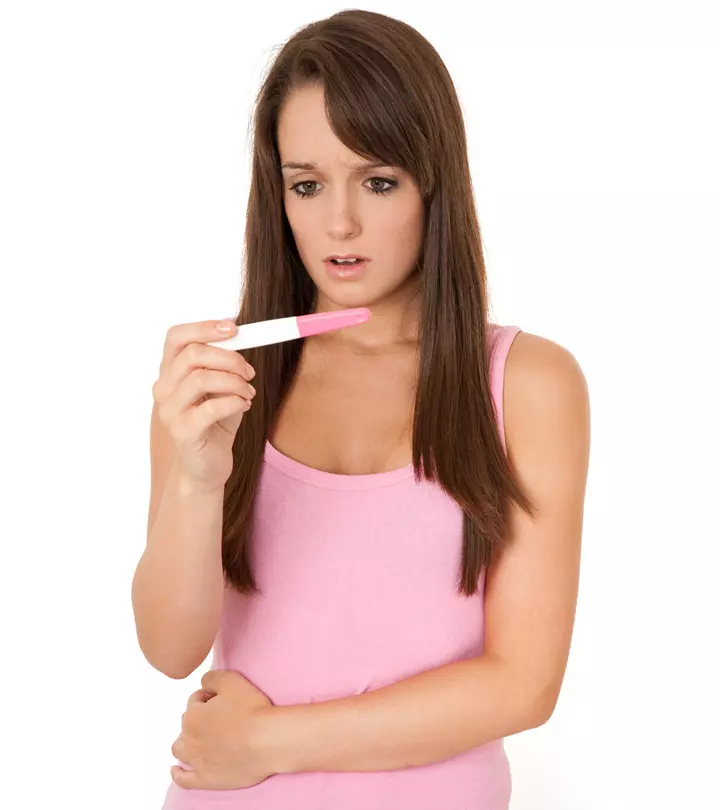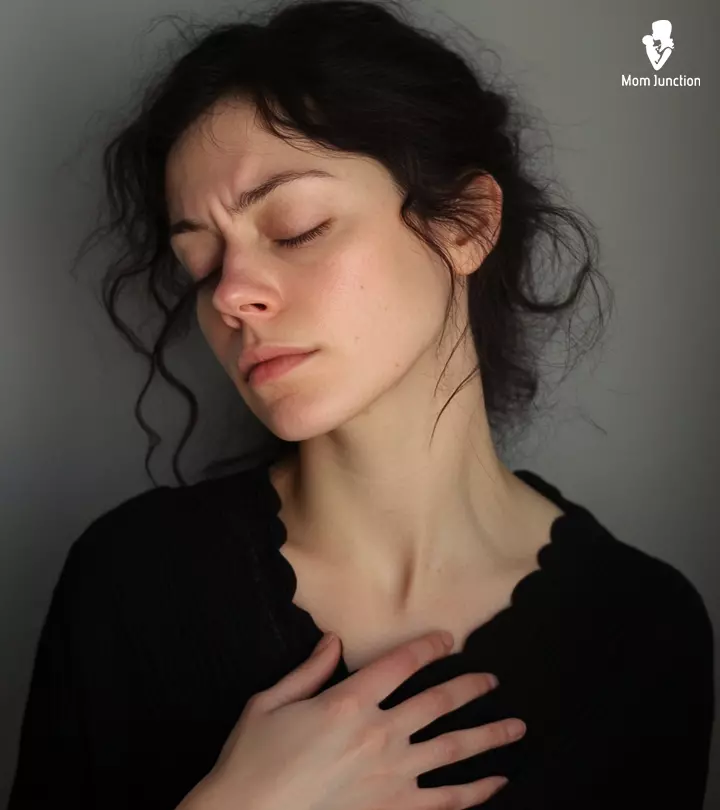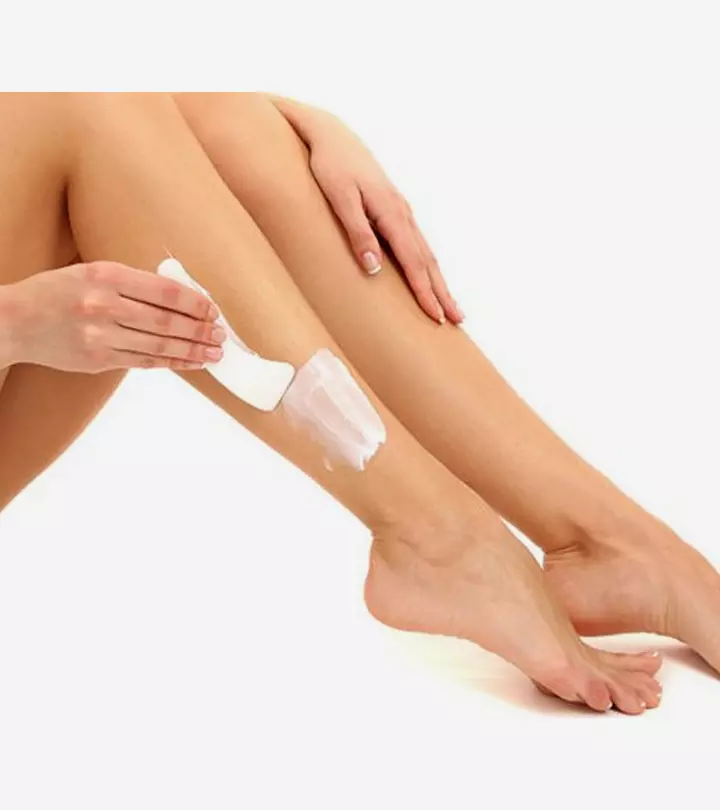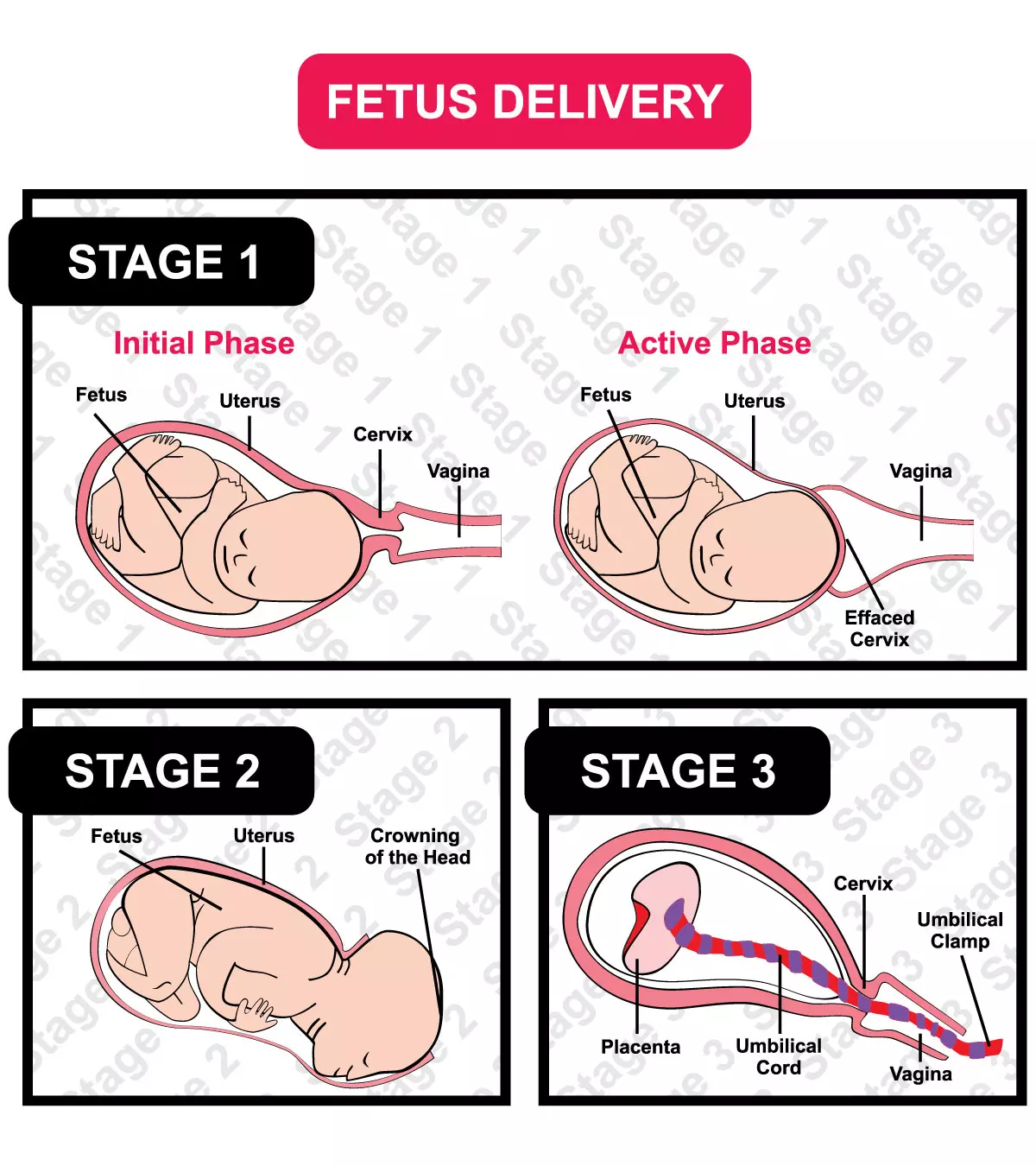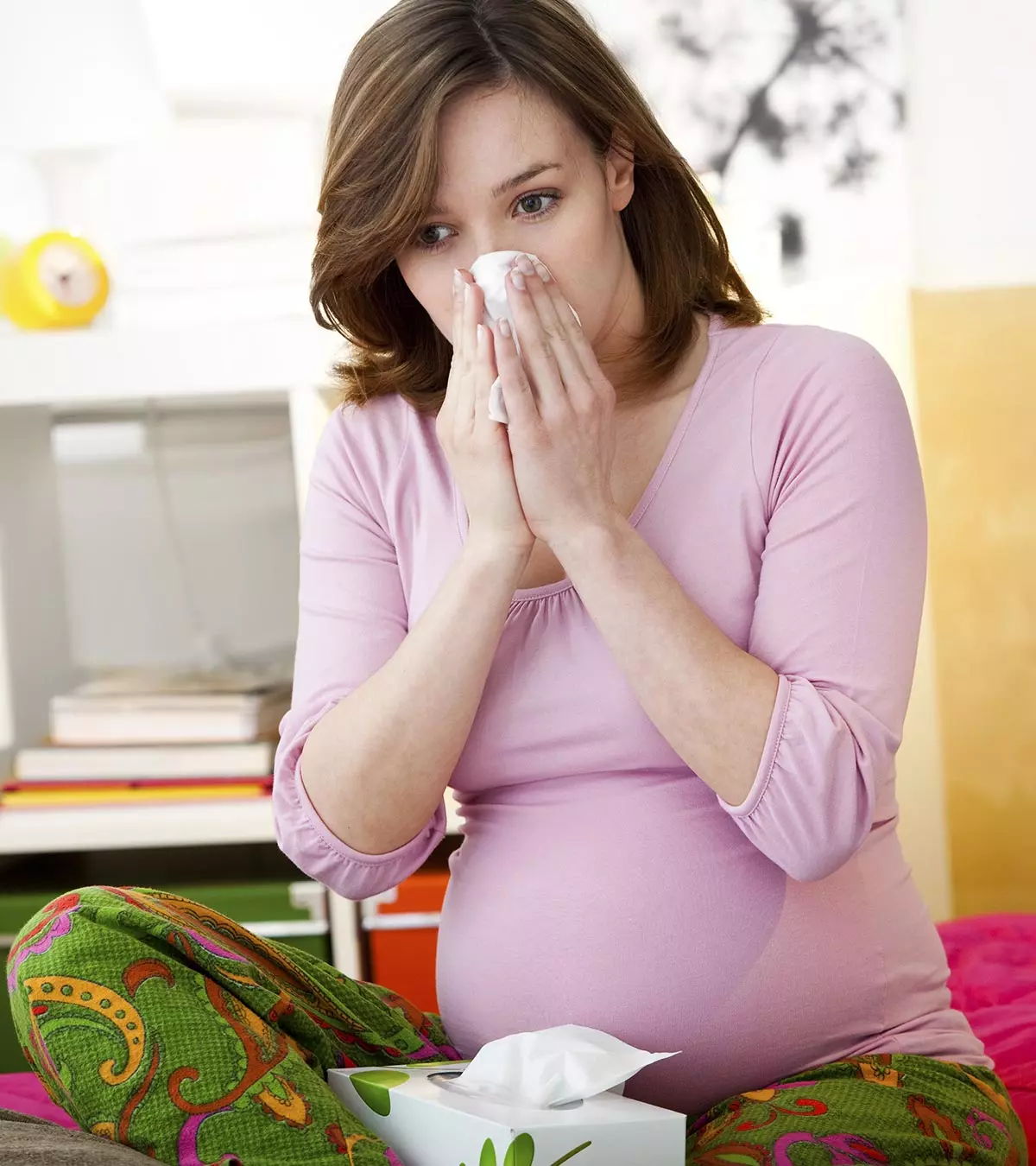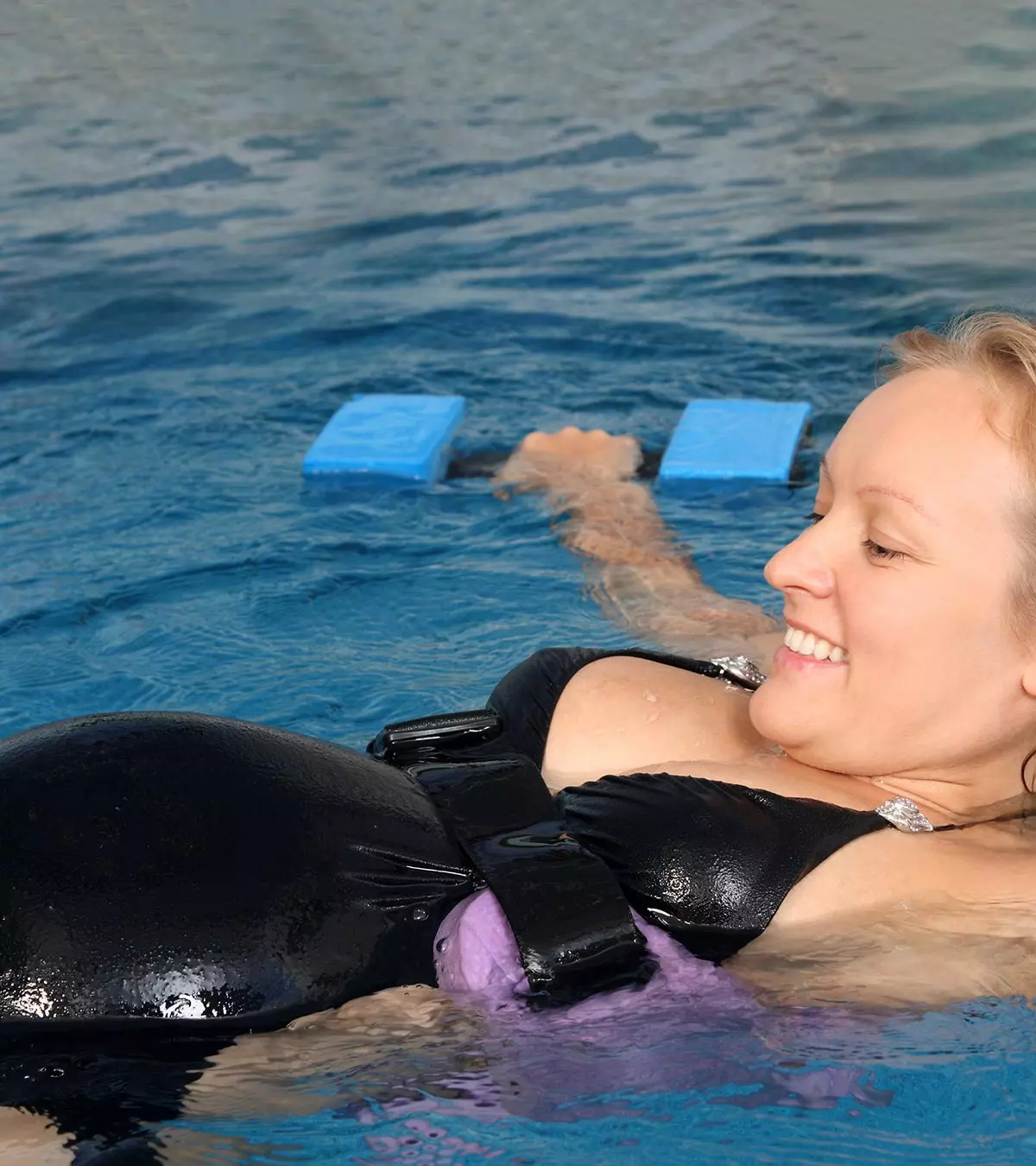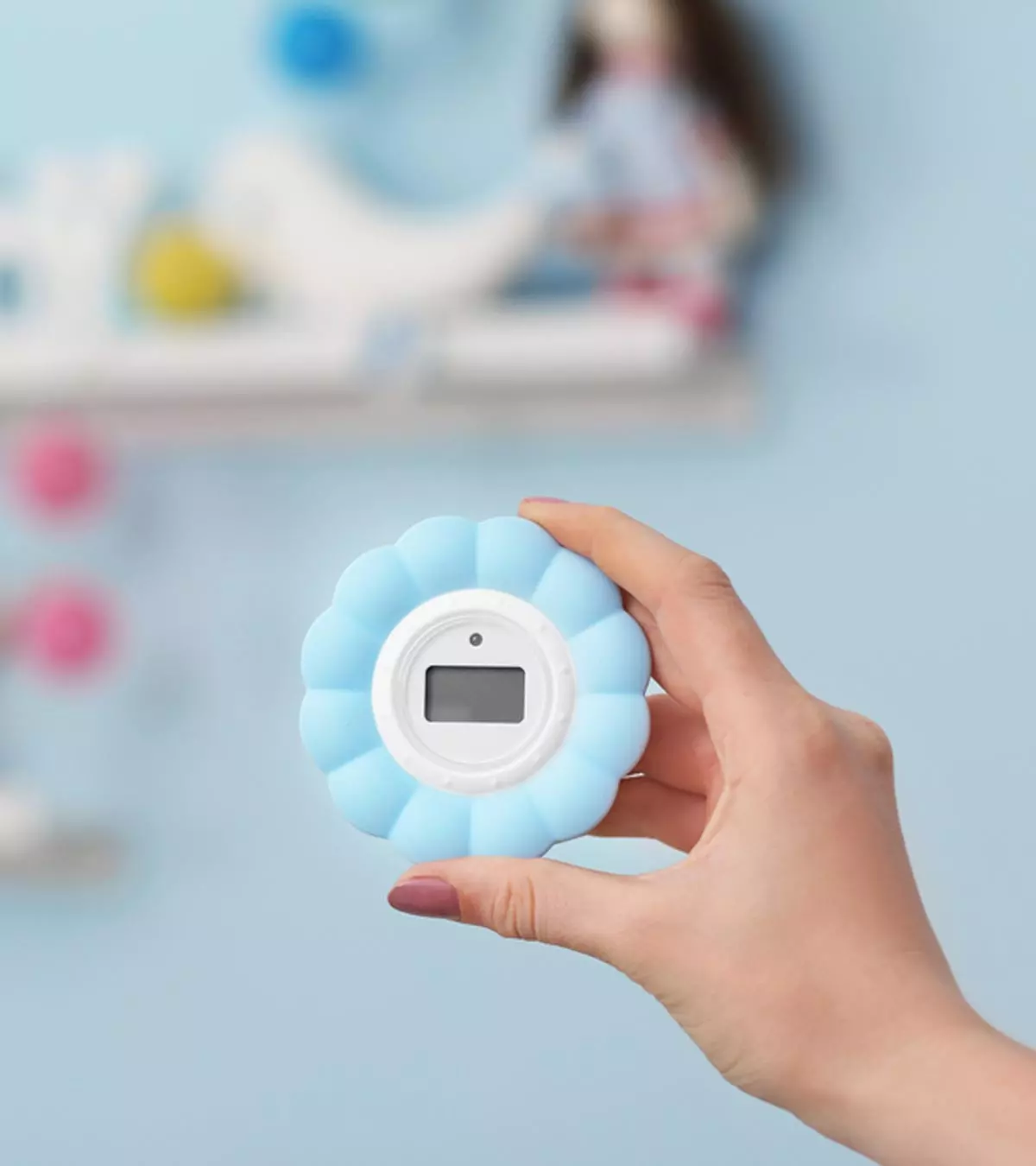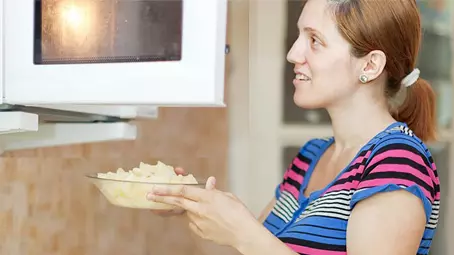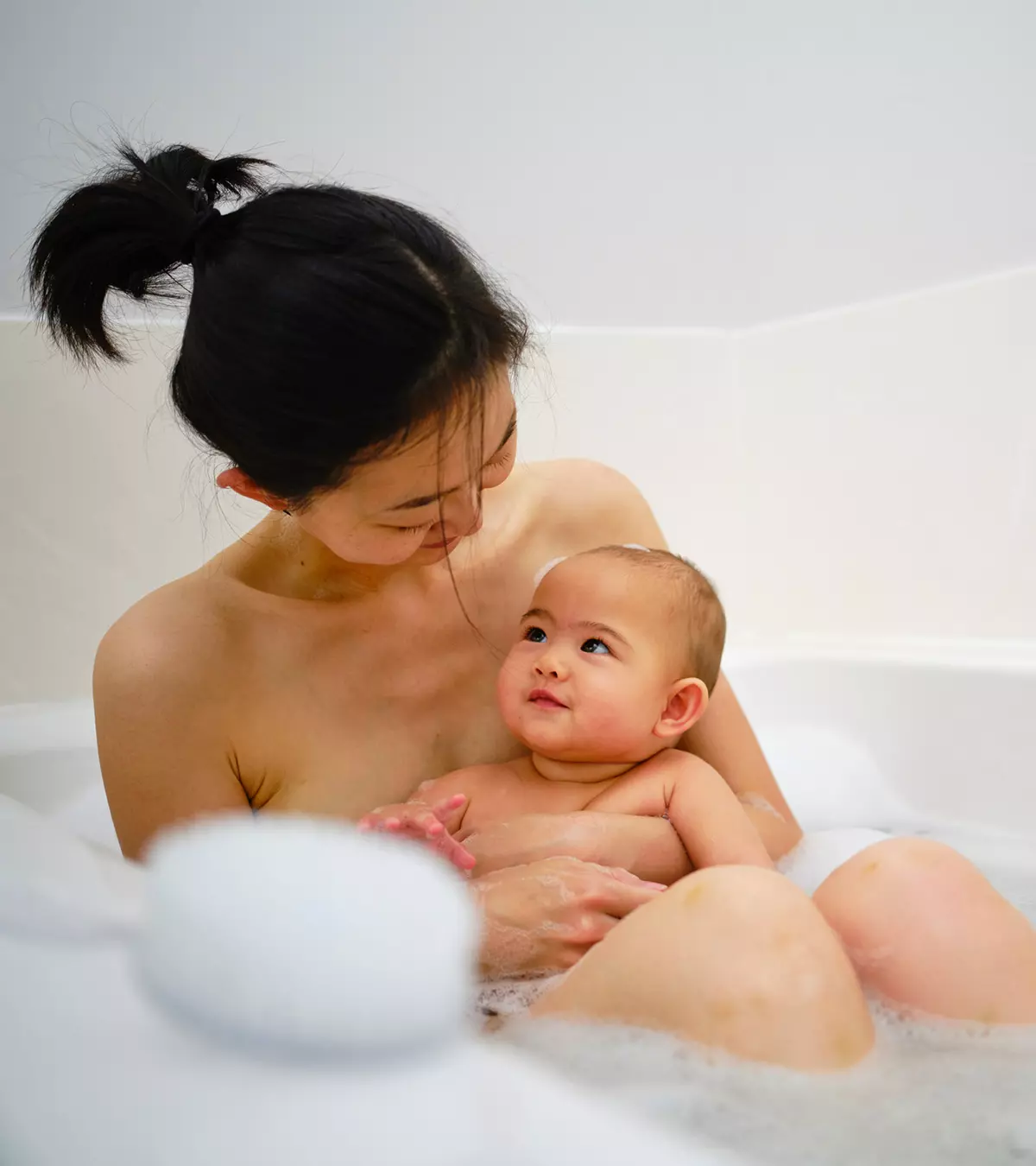
Image: Shutterstock
Although rare, it is possible to see dandruff in toddlers. Dandruff is flaking of the scalp that leads to a formation of yellow or white flakes that are visible on the toddler’s head, hair, and shoulders. The toddlers may also exhibit signs such as scratching their heads and may complain of an itchy scalp (1) (2). Toddler dandruff may also indicate a probability of seborrheic dermatitis.

It’s important for parents to understand dandruff and cradle cap in toddlers, as these conditions can cause discomfort and impact a child’s well-being. Continue reading this post as we tell you the causes, symptoms, home remedies, and dandruff treatment in toddlers.
Key Pointers
- Oily skin, eczema, fungal infections, seasonal changes, or allergic reactions to shampoo can cause dandruff in toddlers.
- Dry skin, itching, temporary hair loss, and red patches are the common symptoms of dandruff.
- Although various home remedies such as aloe vera, olive oil are well-known, they are not deemed as safe for use in toddlers.
- Proper hygiene, washing the hair regularly with gentle or doctor-recommended shampoos, and a proper diet can help combat the condition.
Symptoms Of Dandruff In Toddlers
The primary symptom is the formation of yellow or white dandruff flakes, which are often visible on the scalp and shoulders.
Severe dandruff problems can be due to seborrheic dermatitis, which can display the following symptoms (3).
- A red rash around the ear, forehead, eyebrow, or the scalp
- Greasy white or yellow scales of skin that can be accompanied by red patches of skin seen along the hairline, behind the hair, on eyebrows, on the bridge of the nose, between the nose and lips, on the chest, on underarms and groin
- Dryness of skin
- Temporary hair loss
- Itchiness
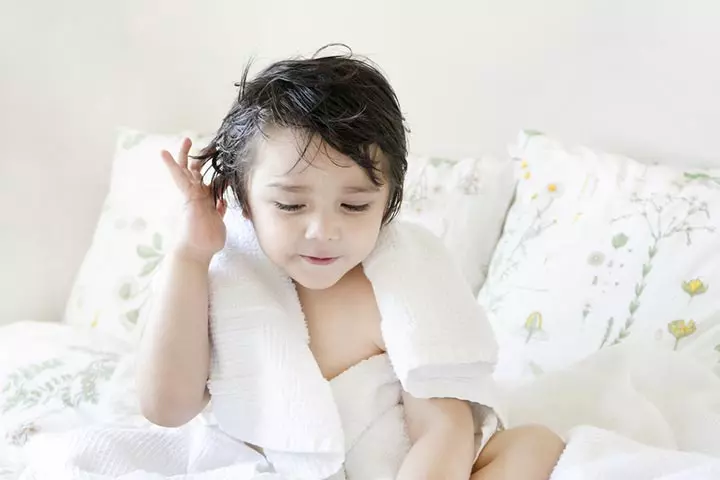
If a fungal infection or yeast overgrowth causes the dandruff, then you will notice hair loss in toddlers or hairless patches on their scalp.
A study examined the prevalence of Seborrheic Dermatitis (SD) among different age groups, and the graph below presents its findings. The study results show that SD affects children between one and four years of age, and the condition is slightly more prevalent in boys than girls of the same age group.

Prevalence of seborrheic dermatitis in children by age and sex (2019)
Source: The global, regional, and national burden of seborrheic dermatitis: results and insights from the Global Burden of Disease 2019 Study; Archives of Dermatological Research Quick fact
Quick factCauses Of Dandruff In Toddlers
The exact cause of dandruff is unknown (4). The following conditions or problems can increase the possibility of dandruff (4) (5) (6) (7).
- Fungal infections, like those caused by a fungus called Malassezia.
- Seasonal changes; dandruff is seen more during winters due to increased oil production and moist scalp.
- Some researchers say that dandruff has a genetic predisposition.
- Allergic reaction to some chemical irritants in soap or shampoo.
- Eczema. According to the Centers for Disease Control and Prevention (CDC), about 10.4% of children in the US aged between zero to five years suffer from eczema, characterized by the shedding of skin and thus increased formation of dandruff flakes (8).
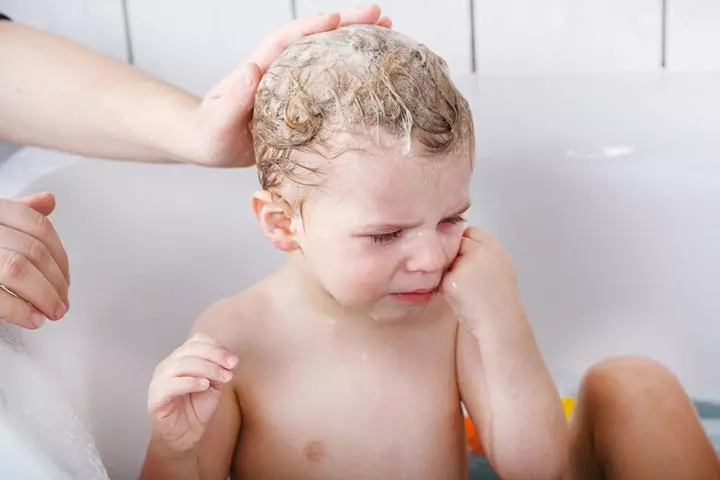
Parents can consider using home remedies to get relief from dandruff.
Home Remedies For Dandruff in Toddlers
The following home remedies have been in use among adults. However, their efficiency in toddlers is not completely known. So, consult a doctor before using any of these natural remedies for toddlers.
- Lemon juice diluted in water is said to be effective in clearing dandruff (9).
 Quick tip
Quick tip- The pulp of aloe vera has been found to be an effective mild cleanser in treating dandruff and itchiness of the scalp (9).
- Overnight application of olive oil to moisturize the scalp, has been found useful for reducing dandruff (9).
- Massaging coconut oil on hair and scalp before shampoo is also considered effective (8). Virgin coconut oil has both antibacterial and antifungal properties (10).
- Shampoo containing tea tree oil is found to be effective in treating dandruff (11).
- A paste made from holy basil or papaya and yogurt also helps in treating dandruff (10).
- A combination of egg yolks, honey, and yogurt can nourish the scalp (10)
- Hair products containing lavender and rosemary can help in gentle cleansing (10)
- Shampoos containing ginger have been found effective in reducing dandruff (12).
- Rinsing of hair with boiled and cooled neem leaf water has shown a reduction of dandruff owing to neem’s antibacterial and antifungal properties (13).
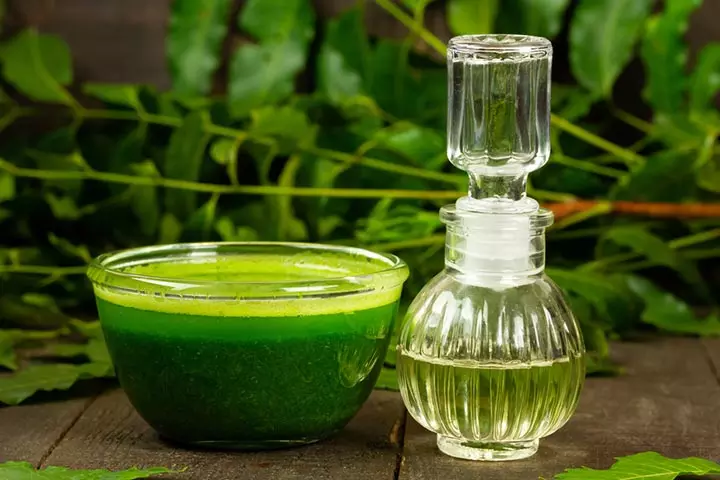
- Application of a diluted paste of baking soda for a few minutes before shampooing helps in the reduction of dandruff. Baking soda has mild exfoliation properties. It absorbs excess oil, removes dead cells, and also fights fungal infections (13).
- Lemongrass oil was seen to be effective in treating dandruff (14).
If your toddler has any allergy, then never use any home remedies without first consulting a pediatrician.
When To Visit The Doctor?
Dandruff usually gets better by using mild baby shampoos, medicated shampoos, or by some home remedies in a few days.
However, if you notice the following conditions, then see a doctor.
- Dandruff gets worse with increased flaking
- Severe itchiness
- Hair Fall or loss of hair in patches
- Bleeding or formation of pus on the scalp
How To Treat Dandruff In Toddlers?
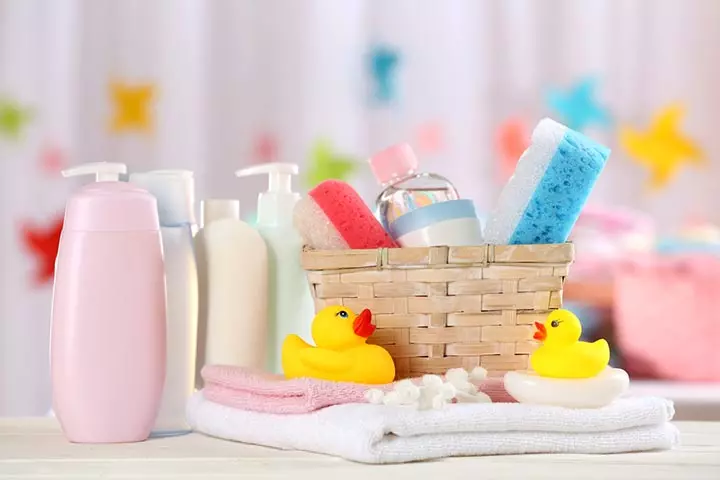
The doctor might recommend anti-dandruff shampoos or ointments that help in treating dandruff. Recommendations might include:
- Wash your toddler’s scalp and hair regularly for proper hair care.
- Use a clean, soft bristle brush to comb their hair.
- Use of anti-dandruff shampoo.
- If OTC shampoos do not help, then the doctor might recommend a suitable shampoo, steroid cream, or antifungal cream depending on the problem.
- The doctor might recommend a shampoo that contains salicylic acid. Salicylic acid breaks down thick layers of skin and helps reduce dandruff (15).
- Shampoos containing other agents like 1% selenium sulfide, sulfur, tar, zinc pyrithione, zinc oxide, ketoconazole(2%), etc., are also effective (16). However, use them only under the doctor’s recommendation.
- Limiting the intake of dietary products like bread, cheese, or food that is made with yeast or fungi (17). Additionally, following a healthy diet may help improve the baby’s scalp health as well as overall well-being.
Always follow the doctor’s recommendation before using any special shampoo or any other product for the toddler.
Frequently Asked Questions
1. Is dandruff hereditary?
Yes. Some animal studies have shown genetic susceptibility to dandruff. However, more research needs to be done to establish the same in humans (3).
2. Does poor hygiene cause dandruff in toddlers?
Infrequent shampooing of the toddler’s head and scalp leads to an excess build-up of dead skin cells. It might eventually lead to flaking of the skin (18).
3. Can I use anti-dandruff shampoo for toddlers?
Yes, you can use an anti-dandruff shampoo that is made specifically for toddlers. However, it is best to consult a doctor before using any over-the-counter product for toddlers.
4. Should a two year old still have a cradle cap?
A cradle cap is generally seen in infants between 2 weeks and 12 months of age. However, this condition can reoccur, and consultation with a doctor is recommended if observed in children more than 12 months of age (21).
Dandruff in toddlers can not be considered a disease. If you continue to see dandruff on your little one’s head, contact a pediatrician or dermatologist for a solution. Maintaining hygiene and using good quality shampoos can help control dandruff-related issues. You may try choosing either natural ways to deal with the problem or stick to an anti-dandruff shampoo recommended by your doctor. Do not panic and be patient with its use as it takes time to show the best results.
Infographic: How To Get Rid Of Dandruff In Toddlers?
Dandruff is a common hair condition that can affect anyone, including toddlers. It may be triggered by various factors, including dry skin, eczema, or sensitivity to certain hair products, and causes itching and irritation. So, check out the infographic below for effective methods to treat dandruff in babies.
Some thing wrong with infographic shortcode. please verify shortcode syntax
Illustration: Toddler Dandruff: Causes Treatment And Home Remedies
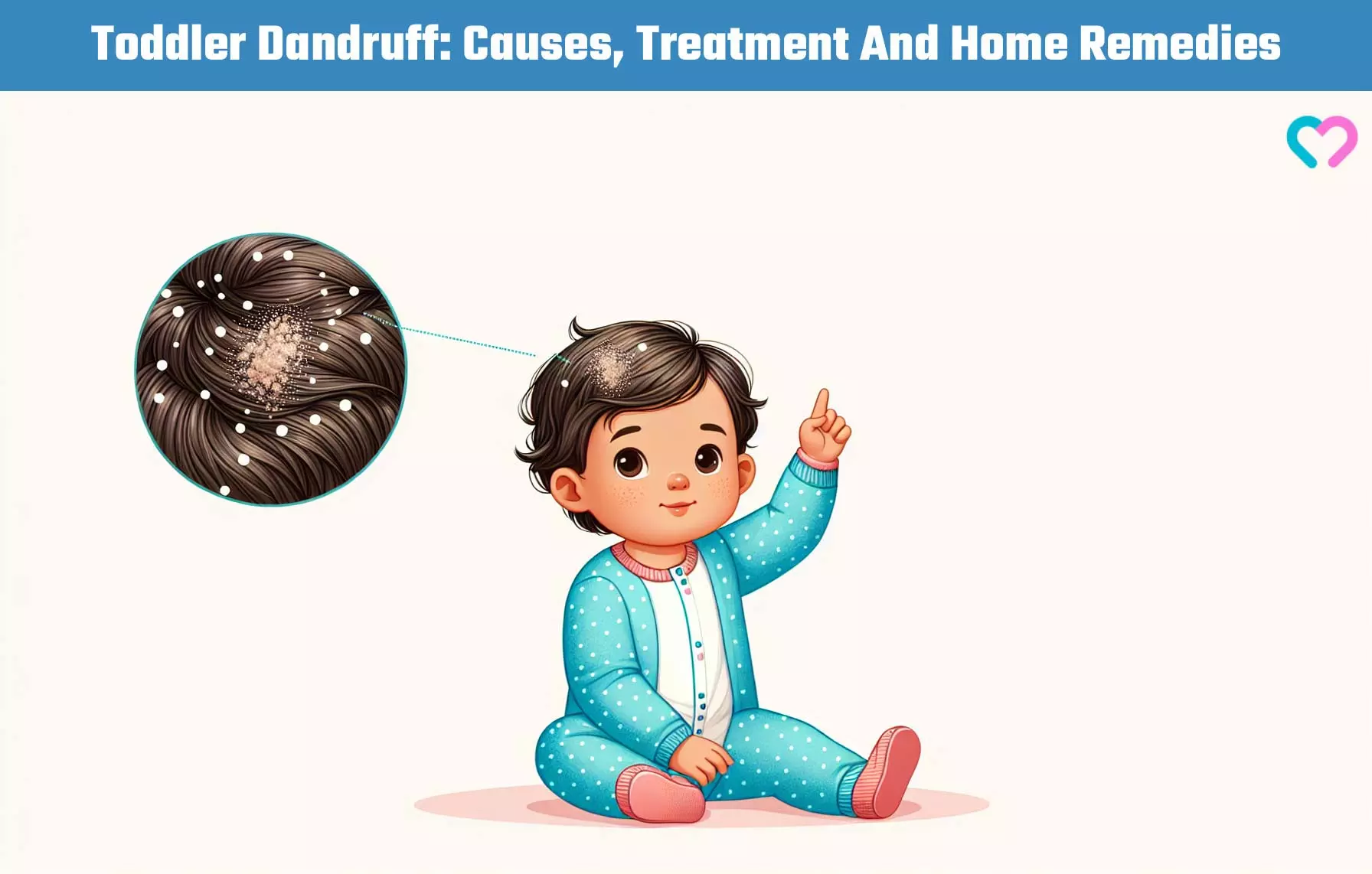
Image: Dalle E/MomJunction Design Team
References
1. Dandruff, Cradle Cap, and Other Scalp Conditions; U.S. National Library of Medicine
2. What Is Dandruff; Northwestern Medicine
3. Luis J. Borda and Tongyu C. Wikramanayake, Seborrheic Dermatitis and Dandruff: A Comprehensive Review; U.S. National Library of Medicine
4. Seborrheic Dermatitis in Children; National Eczema Association
5. Natural Dandruff Treatments; Association of Accredited Naturopathic Medical Colleges (AANMC)
6. Dandruff; University of Michigan
7. Dandruff; Government of South Australia
8. Diagnosed Allergic Conditions in Children Aged 0–17 Years: United States, 2025; Jamaica Hospital Medical Center
9. Home Remedies for Dandruff; CDC/National Center for Health Statistics
10. Tips for healthy hair with natural remedies to get long, strong and shiny hair; AK Clinics Organization
11. Satchell AC, Saurajen A, Bell C, Barnetson RS, Treatment of dandruff with 5% tea tree oil shampoo; The Journal of American Academy of Dermatology
12. Jae Young Yu et al, Preclinical and Clinical Studies Demonstrate That the Proprietary Herbal Extract DA-5512 Effectively Stimulates Hair Growth and Promotes Hair Health; Hindawi journal
13. How To Get Rid Of Dandruff: Causes, Treatment And Home Remedies; AK Clinics Organization
14. Chaisripipat, Lourith, Kanlayavattanakul, Anti-dandruff Hair Tonic Containing Lemongrass (Cymbopogon flexuosus) Oil.; U.S. National Library of Medicine
15. Salicylic Acid Shampoo; Cleveland Clinic
16. Zinc Pyrithione; ScienceDirect
17. Seborrheic Dermatitis Clinical Tool; University of Wisconsin-Madison
18. Causes and Diagnosis of Dandruff ; Northwestern Medicine
19. Dandruff; Raising Children Network
20. Dandruff; Nemours KidsHealth
21. Cradle Cap; Seattle Children’s Hospital
Community Experiences
Join the conversation and become a part of our nurturing community! Share your stories, experiences, and insights to connect with fellow parents.
Read full bio of Dr. Elna Gibson
Read full bio of Dr. Ritika Shah
Read full bio of Rohit Garoo
Read full bio of Shinta Liz Sunny

 Be watchful
Be watchful



